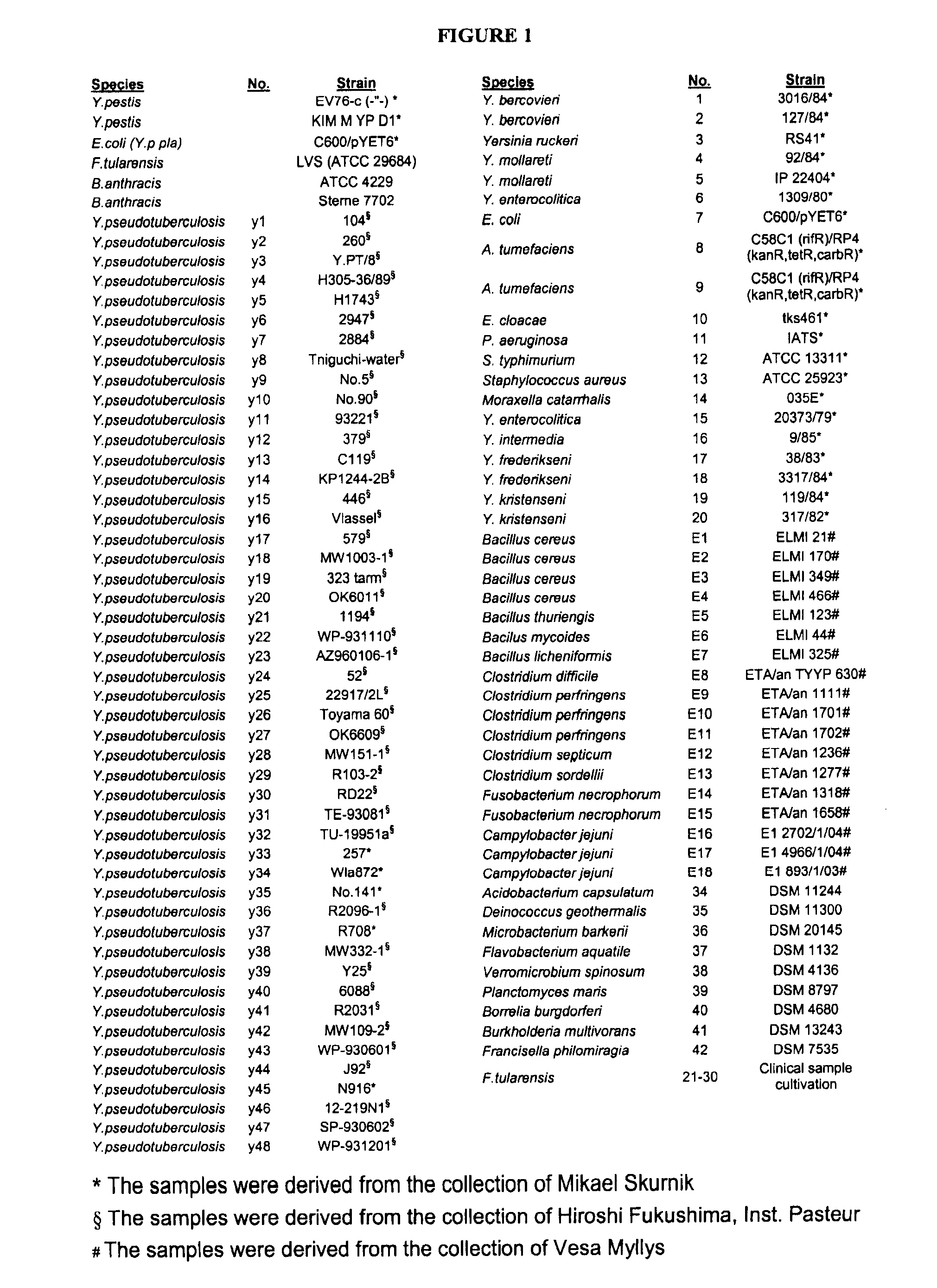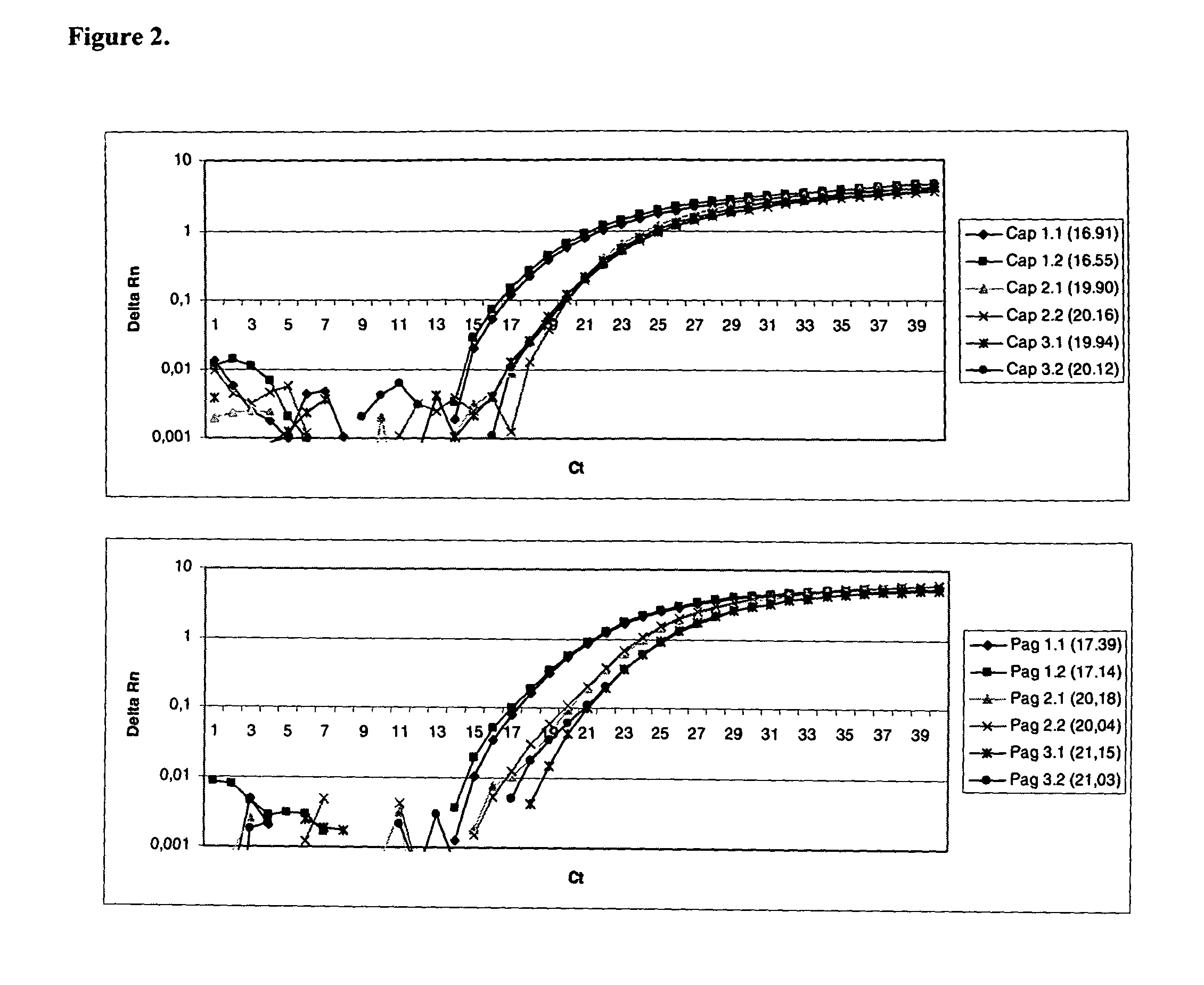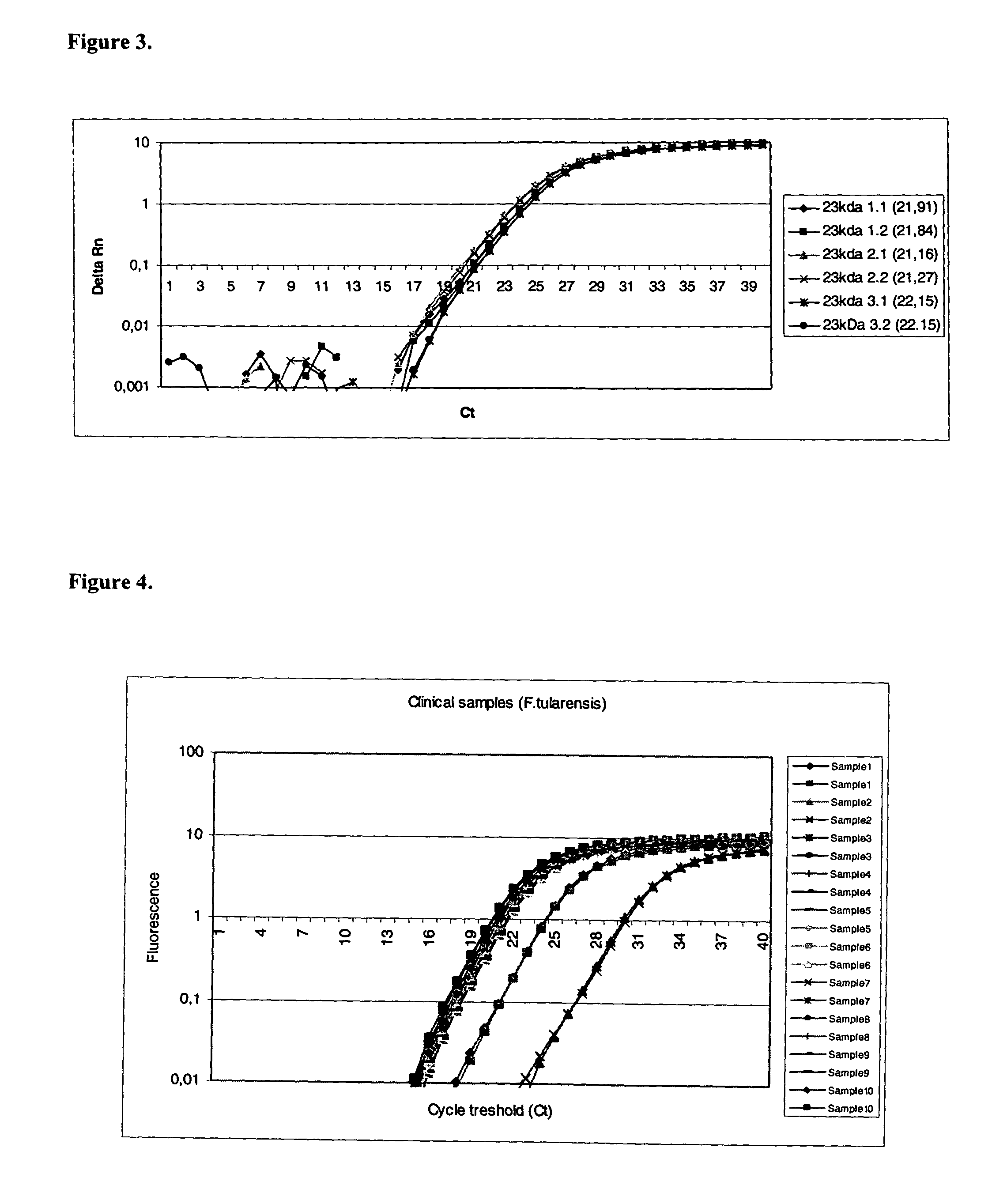Diagnostic method and products useful therein
a diagnostic method and technology of products, applied products useful in the field of diagnostic methods, can solve the problems of large investment required to protect against these agents, time-consuming classical microbiological diagnostic methods, and the inability to cultivate for several days, so as to reduce the time for analysis
- Summary
- Abstract
- Description
- Claims
- Application Information
AI Technical Summary
Benefits of technology
Problems solved by technology
Method used
Image
Examples
example 1
Primer and Probe Selection
[0079]The design of primer / Taqman MGB probe combinations was based on the sequences of B. anthracis, Y. pestis and F. tularensis available from the NCBI public database (http: / / www.ncbi.nlm.nih.gov / blast / ). The primer and probe sequences were selected based on the following criteria: predicted cross-reactivity with currently available GenBank sequences, lack of primer-dimer formation, self annealing of nucleotide, a +10° C. higher melting temperature of the probe than primers, no stretches of identical nucleotides than four, and no guanine at the 5′ end of the probe. The design was done using the Primer Express ver. 2.0 software (Applied Biosystems, CA, USA).
[0080]The fluorescent reporter dye conjugated at the 5′ end of the Taqman MGB probe was a 6-carboxy-fluorescein (FAM) and in the 3′ end a non-fluorescent quencher (Applied Biosystems, CA, USA).
[0081]B. anthracis specific primers pagF (SEQ ID NO: 1), pagR (SEQ ID NO: 2), capF (SEQ ID NO: 4), capR (SEQ ID...
example 2
The Real-Time PCR Analysis of Category a Bacterial Agents
[0082]For the PCR analysis DNA was isolated from the bacterial strains and isolates listed in FIG. 1. The strains 1-20 and Y1-Y48 were from the collections of Haartman Institute, Division of Bacteriology and Immunology, Helsinki, Finland. Bacterial strains E1-E18 were from the National Veterinary and Food Research Institute, University of Helsinki, Finland. All isolates (1-20 and E1-E18) and positive controls: B. anthracis Sterne 7702, B. anthracis ATCC 4229, Y. pestis EV76-c and F. tularensis LVS-strains were grown according to conventional microbiological methods. Strains 34-42 were acquired from DSMZ (Braunschweig, Germany), and grown according to the DSMZ instructions except for Verromicrobium spinosum, Borrelia burgdorferi and F. philomiragia that were received as actively growing cultures.
[0083]All the bacterial isolates were purified using the automated MagNAPure LC System (Basel, Switzerland) according to the manufactu...
example 3
The Sensitivity and Specificity of the Method of Invention
[0088]In order to determinate the range of linearity, the lower limit of detection and intra-assay variation, three replicates of nine 10 fold dilutions of B. anthracis, Y. pestis and F. tularensis DNA in TE buffer (Tris 10 mM, EDTA 1 mM; adjusted to ph 8.0 with HCl) containing approximately 10 ng to 0.1 fg DNA were analyzed by the method of Example 2. Standard graphs of the Ct values were compiled and the correlation coefficients were calculated. All R2 values were above 0.99 and slopes were near 3.3 thus making PCR amplification effiency highly successful.
[0089]The sensitivity of the real-time PCR analysis of the invention for B. anthracis pagA gene and capB gene was 1 fg and 10 fg, respectively, for Y. pestis pla gene 0.1 fg and for F. tularensis 23 kDa gene sensitivity was 0.1 fg of total DNA. The sensitivity of the method of invention corresponds to 1 bacterial cell with all three category A agents.
[0090]For assessing th...
PUM
| Property | Measurement | Unit |
|---|---|---|
| melting temperature | aaaaa | aaaaa |
| total time | aaaaa | aaaaa |
| volume | aaaaa | aaaaa |
Abstract
Description
Claims
Application Information
 Login to View More
Login to View More - R&D
- Intellectual Property
- Life Sciences
- Materials
- Tech Scout
- Unparalleled Data Quality
- Higher Quality Content
- 60% Fewer Hallucinations
Browse by: Latest US Patents, China's latest patents, Technical Efficacy Thesaurus, Application Domain, Technology Topic, Popular Technical Reports.
© 2025 PatSnap. All rights reserved.Legal|Privacy policy|Modern Slavery Act Transparency Statement|Sitemap|About US| Contact US: help@patsnap.com



